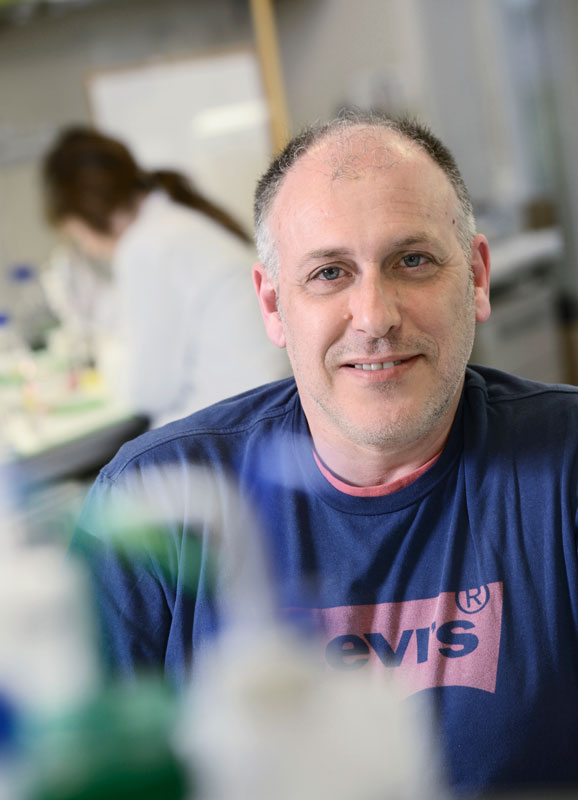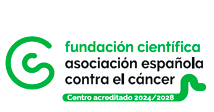
2023/01/12
CIC bioGUNE researchers describe the presence of a tick molecular receptor able to respond to signals from the host
The information could be used in the future to generate measures that disable this signalling pathway essential for tick survival, and could therefore be used as a control measure for these parasites and the diseases they transmit.
The work, published in the journal Science, clarifies the evolutionary mechanisms in signalling pathways that are essential for performing key functions of environmental response (immune response) and the post-embryonic development of ticks.
Ticks are an ancestral group of animals that can feed on a wide range of species, including primitive reptiles. This long co-evolutionary history between ticks and their different hosts has facilitated the development of communication pathways between the parasite and the animals it feeds on. Researchers at CIC bioGUNE have described the presence of a tick molecular receptor that uses a highly conserved signalling pathway and which is able to respond to signals from the host, in particular those related to 'danger' signals (presence of infection), which encompass both immune signals and those related to parasite metamorphosis.
The work, published in the journal Science, clarifies the evolutionary mechanisms in signalling pathways that are essential for performing key functions of environmental response (immune response), as well as for the post-embryonic development of ticks. It also demonstrates the flexibility of these pathways and their capacity to adapt by incorporating components that are able to add new functionalities and thus provide survival advantages for these parasites.
“One possible medium and long-term objective is to use this information to generate measures that disable this signalling pathway, which is essential for tick survival. Thus, they could be used as measures to control these parasites and, consequently, the diseases they transmit, such as Lyme borreliosis, amongst others”, explains Juan Anguita, an Ikerbasque researcher at CIC bioGUNE who took part in the study.
Molecular biology and large-scale data mining and analysis (Omics) tools, as well as other complementary methodologies, have been used to conduct the study. Much of the work has focused on the genetic manipulation of ticks by RNA interference microinjection, pioneered by the group led by Utpal Pal at the University of Maryland, College Park.
The work has been led by this same group, with the collaboration of researchers from Yale, the University of Maryland in Baltimore, the National Institutes of Health and the University of Minnesota. Collaboration with CIC bioGUNE began several years ago, with a research stay in the laboratory of Utpal Pal by the then PhD student Julen Tomás Cortázar, who is now in his postdoctoral stage in Dublin, and has continued over the years with close contacts between the laboratories of Drs Anguita and Pal.
About CIC bioGUNE
The Center for Cooperative Research in Biosciences (CIC bioGUNE), member of the Basque Research and Technology Alliance (BRTA) and located in the Bizkaia Technology Park, is a biomedical research organization conducting cutting-edge research at the interface between structural, molecular and cell biology, with a particular focus on the study of the molecular bases of disease, for use in the development of new diagnostic methods and advanced therapies.
About Ikerbasque
Ikerbasque - the Basque Foundation for Science - was created as the result of an initiative of the Basque Government Department of Education to further strengthen its commitment to scientific research by attracting, bringing to the Basque Country and subsequently consolidating excellent researchers from all over the world. Today, Ikerbasque is a consolidated organization with 290 researchers working in all fields of knowledge.
About the BRTA
The BRTA is an alliance made up of 4 collaborative research centers (CIC bioGUNE, CIC nanoGUNE, CIC biomaGUNE and CIC energiGUNE) and 12 technology centers (Azterlan, Azti, Ceit, Cidetec, Gaiker, Ideko, Ikerlan, Lortek, Neiker, Tecnalia, Tekniker and Vicometch), with the aim of developing advanced technological solutions for Basque companies.
With the support of the Basque Government, the SPRI Group and the Provincial Councils of the three regional provinces, the alliance seeks to promote collaboration among its centers, to strengthen the conditions to generate and transfer knowledge to companies, contributing to their competitiveness, and to spread Basque scientific and technological capacity outside of the Basque Country.
BRTA has a staff of 3,500 professionals, accounts for 22% of the Basque Country’s R&D investment, generates an annual turnover of over EUR 300 million and files 100 European and international patents per year.
CIC bioGUNE, member of the Basque Research & Technology Alliance, BRTA
See a large version of the first picture





